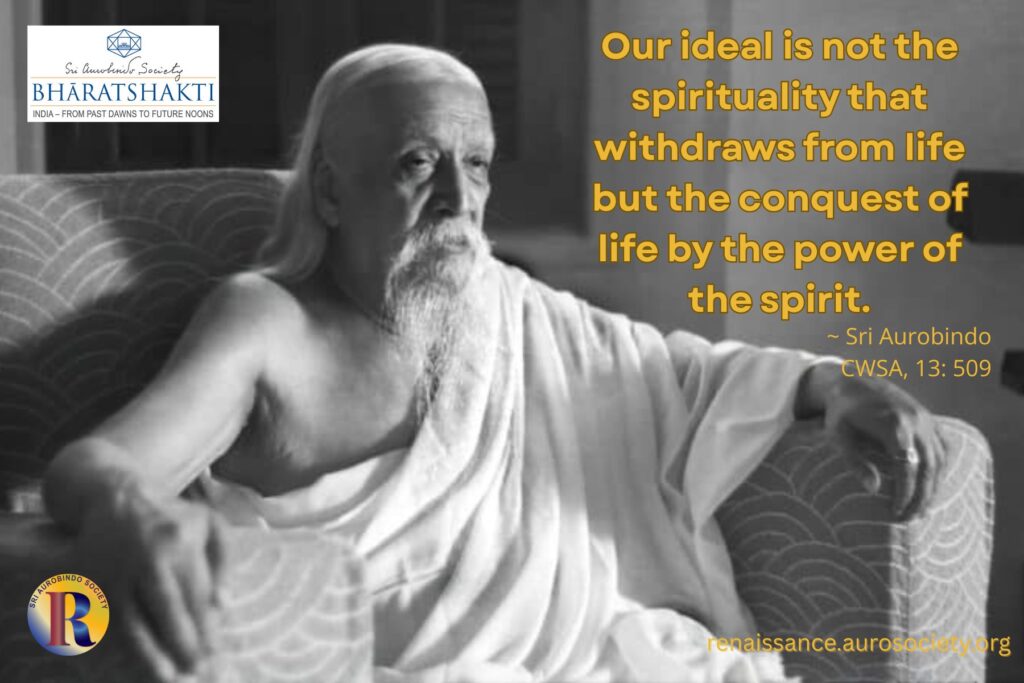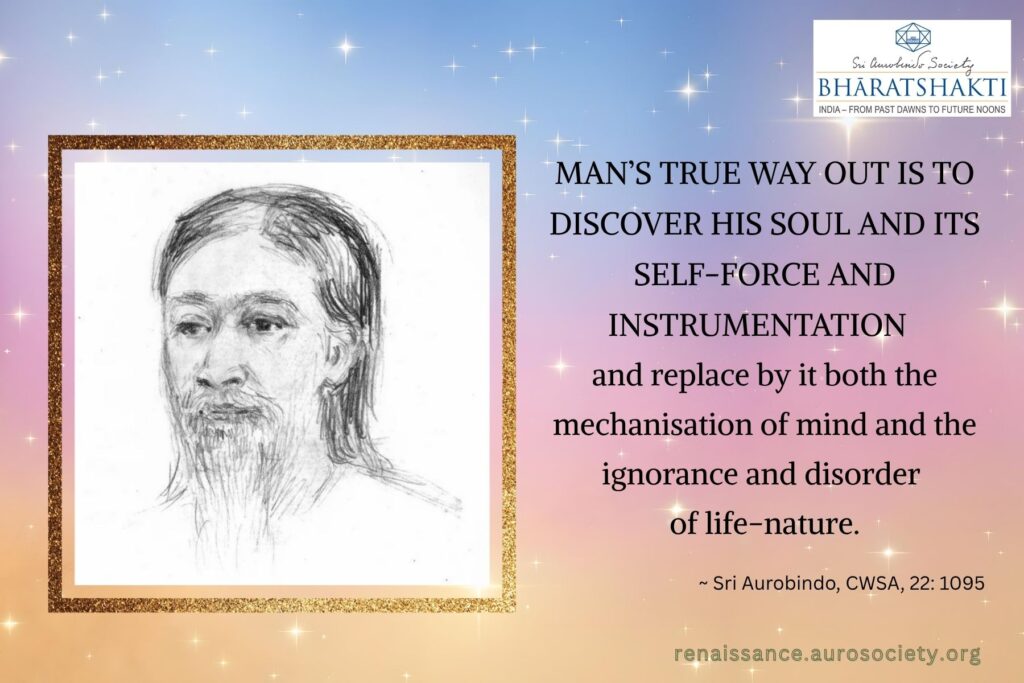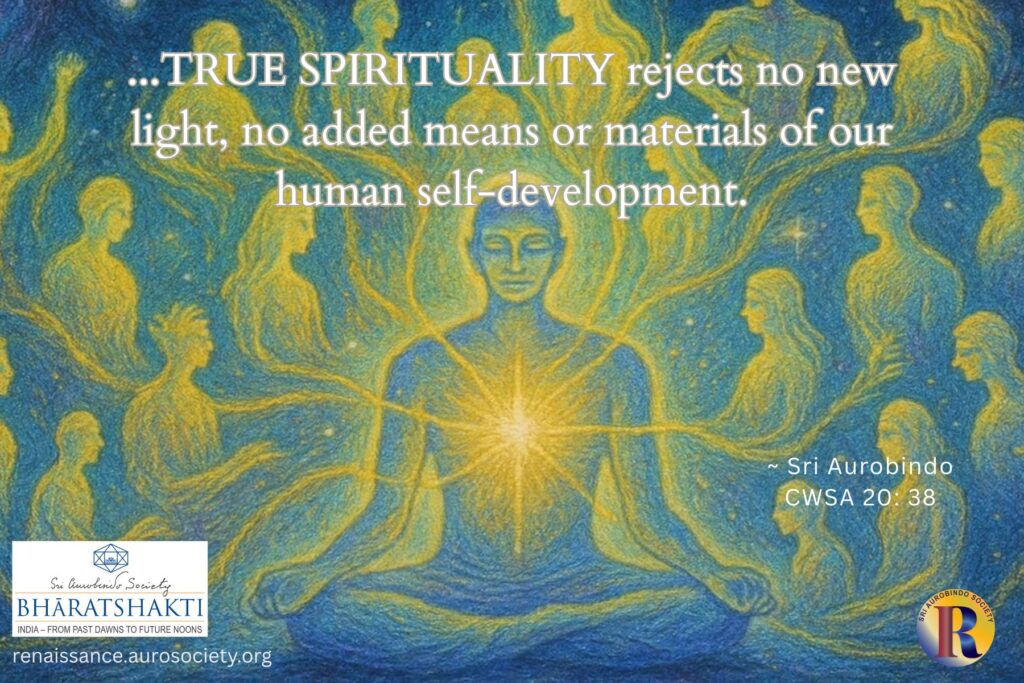Vol. III, Issue 7
Author: Beloo Mehra
Have you had those moments when everything seems perfect? Even if it is just a few moments, but somehow everything feels right in those moments — completely peaceful and perfect? We look around and everything feels as if it is in its right place, as it should be. Nothing is amiss, nothing is wrong. No chaos, no fuss, all is at peace.
I think we all have experienced such moments filled with a peaceful and calm perfection. In the middle of these perfect moments, however, sometimes somewhere some part of the mind begins to ask — can it always be so? Can it always be this perfect?
That Morning in the Garden
But let me go back to that morning when it all was indeed perfect.
I had gone out in the garden to pluck a few curry leaves for the upma I was about to cook for breakfast. With curry leaves in my hand, I strolled lazily in the garden. On the spur of a moment I just looked up, through the branches of the coconut trees and other flowering trees and bushes. And for that moment, everything was perfect. It just was.
A sense of quiet happiness and a peaceful joy came over the heart. There was no pull or push, just a calmness in the heart. Mind didn’t bring up any of the thousand things that are normally hovering around it, routine things that consume a busy morning, or any of the non-routine things that we falsely assume are our business to resolve. Just for those few moments all was perfectly right with my life. All was alright with the world.
Most of the mornings when I am out in the garden, my mind generally gets busy preparing a list of tasks that need my attention. The bushes that need pruning, weeds that need pulling, plants that need re-potting, vines that need supporting, areas that need cleaning, etc. etc.
But that morning, there was nothing to be done. All was just perfect, as it should be.
Everything was in its right place and everything was as it should have been. Everything felt perfect, right up to the plant that was almost dying, the last dead leaf in the flower bed, and the over-filled compost bin. I was simply there, just there, midst the plants and flowers, and everything was perfect.
Such moments are precious, such moments are rare. That’s why we feel so immensely grateful for these moments. We must cherish them deeply, keep them safe in our hearts, relive them via memory. And we must aspire to have more of such moments, to gradually build upon what we felt during these rare moments.
The Mother’s Grace
It is only the Mother’s Grace and Help that make such moments possible. But we must keep working on our openness and receptivity for that Grace and Help to work upon us.
“The Grace is always there, eternally present and active, but Sri Aurobindo says that it is extremely difficult for us to be in a condition to receive it, keep it and make use of what it gives us.
~ The Mother, CWM, Vol 16, p. 250
[…]
To receive the divine grace, not only must one have a great aspiration, but also a sincere humility and an absolute trust.”

(Common name: King’s mantle, Bush clock vine).
It is indeed Her Grace alone that some gifts offered by my little garden over the past few months gave me some valuable reminders. These reminders are for how to be more open and receptive to the Grace; how to keep working on my aspiration, faith, sincerity, purification, peace. And also how to patiently wait for those rare moments when everything is perfect.
Take a look.
When Flowers are the Reminders
A pre-requisite is to seek support only in the Divine. This does not mean there is no need for any personal effort. On the contrary, it only means to enhance the intrinsic quality of all personal effort by infusing it with an unfailing trust in the Divine which guides, supports, and energizes all our efforts.

(Common name: St. Vincent lilac, Italian jasmine)
Given that we are made up of many different parts and not fully unified in our being, some parts within us may be more resistant and hence not ready to trust the Divine support. Such obstinate parts within us, especially the most crusty physical mind in us must go through a conversion process of sort.
“In the human physical mind there is always a tendency not to understand or to misunderstand and to interpret according to its own notions. That can only be removed by the Light in the mind and the power everywhere which refuses to accept suggestions of disturbance.”
~ Sri Aurobindo, CWSA, Vol. 28, p. 182
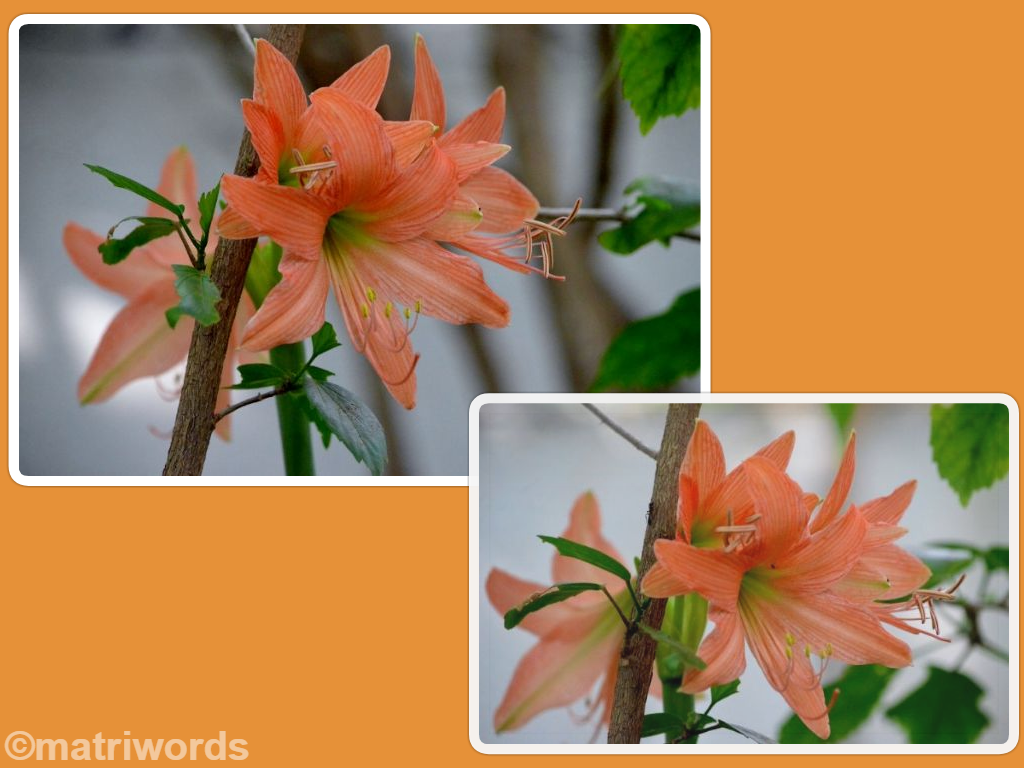
Ready to understand everything and to grow continually.
(Common name: Amaryllis)
Flowers of Peace
When restlessness in the vital-emotional nature clouds the consciousness and creates a discouraging inner environment or brings in despair and sadness, we become less receptive to the higher Force, less open to the higher Light. That is when we must call upon the Peace. Because peace is the first foundation, Sri Aurobindo reminds us.
Peace is not only fundamental for inner harmony, but also equally good for outer health.

(Common name: Beach gardenia, zebra wood)
We also must call for peace that comes from the cessation of a clinging desire or want for something.
“One cannot overcome one’s desires by making oneself weak but only in strength, balance and peace.”
~ The Mother, CWM, Vol. 14, p. 255
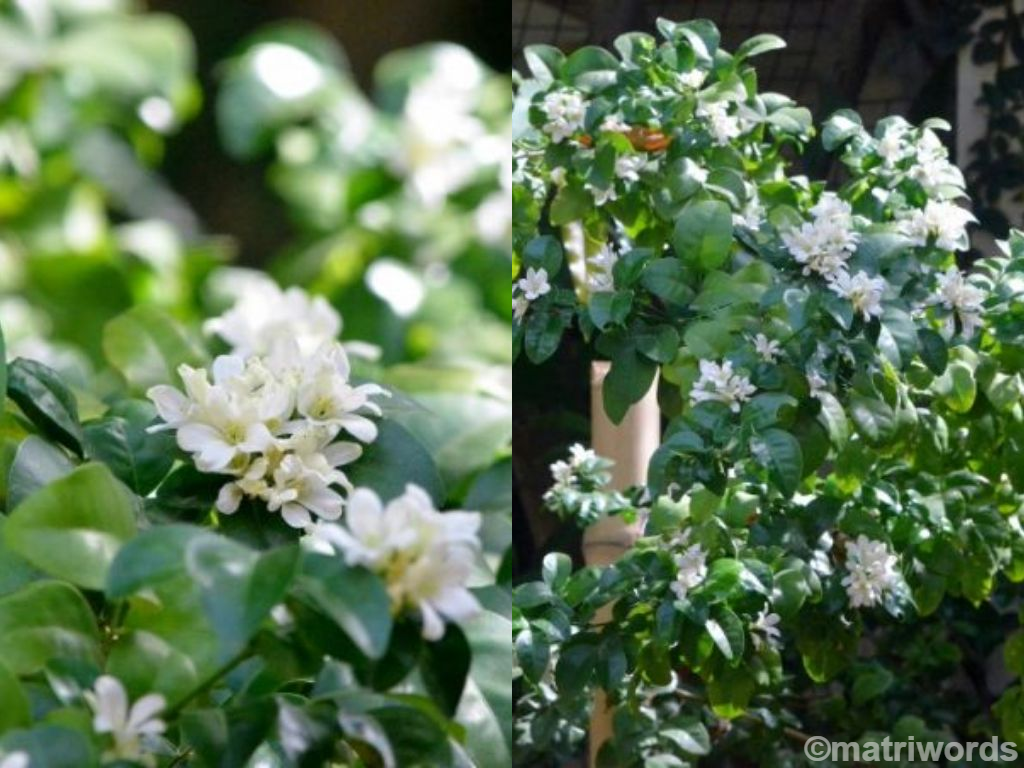
(Common name: Orange Jessamine)
Much of the hard, rough crust in our outer parts — physical, vital, mental — that continues to resist the working of the Light has its deep roots in the hidden, subconscient layers of our being. Only the Higher Light and Force can gradually purify the subconscient. But for these higher powers to descend, peace is the first condition.
“The subconscient is to be penetrated by the light and made a sort of bed-rock of truth, a store of right impressions, right physical responses to the Truth. Strictly speaking, it will not be subconscient at all, but a sort of bank of true values held ready for use.”
~ Sri Aurobindo, CWSA, Vol. 31, p. 612
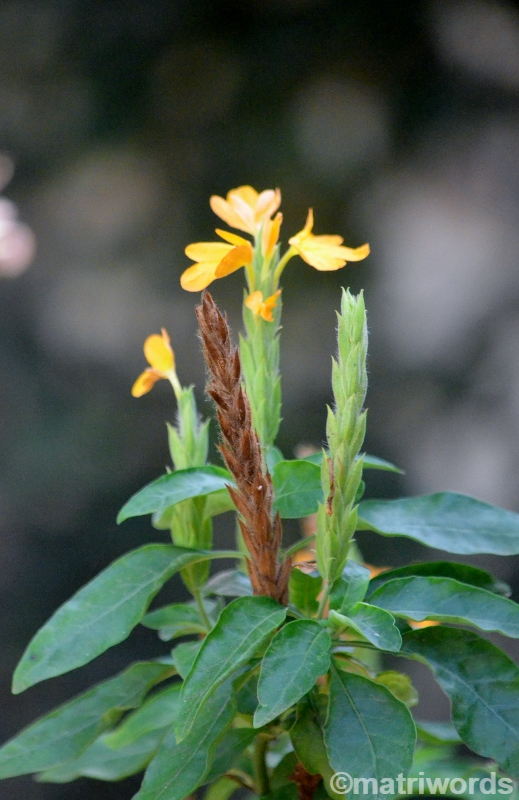
(Common name: Firecracker flower)
* * *
Slowly, over time, with intense and sincere aspiration but mostly with the Divine Grace, the subconscient may begin to loosen its grip. That is how the Truth from above begins to work, slowly, and in response to a sincere call, a true aspiration from below. Peace, patience, perseverance, trust, and sincerity are indispensable.

(Common name: Cape honeysuckle)
And in time, a miracle may happen!
“At every moment all the unforeseen, the unexpected, the unknown is before us — and what happens to us depends mostly on the intensity and purity of our faith.”
~ The Mother, CWM, Vol. 14, p. 80
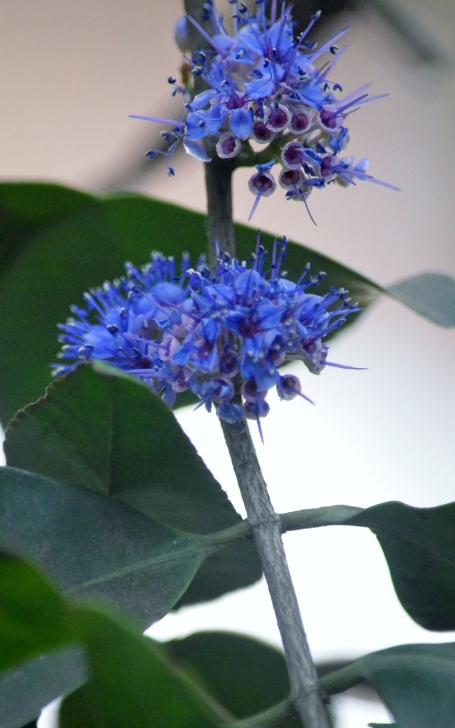
(Common name: Ironwood)
A miracle happens. And all is peaceful and perfect.
For those moments at least, everything is perfect. Those moments are miraculous indeed when we truly begin to feel that everything is perfect. Everything is at Peace. Just as it should be. As it happened that morning.
Peace in this Issue
Since August 2021, every month we have been exploring each of the twelve attributes that the Mother says are essential for full manifestation of Her Work. We have now come to Peace. Like the previous eleven issues, here also we explore the soul-quality of Peace in its various dimensions — inner and outer, individual and collective.
The Mother once said:
“It is by a quiet, strong and persistent peace that the true victories can be won.”
~ CWM, Vol. 14, p. 138
What are the victories we are trying to win? Over our nature’s defects and imperfections; over the attacks from adverse forces that keep shoving us down every time we make an attempt to rise above our lower nature; over all the darkness within and without that tries to steer us away from the sunlit path.
But none of these victories are possible unless we have established a firm base of peace, quietude and calm. Peace is the first foundation, said Sri Aurobindo. And that is what we highlight in our Guiding Light feature this month.
A prayer from the Mother’s ‘Prayers and Meditations‘ inspires us to pray for the transformation of the ordinary consciousness and for uniting with the supreme consciousness so that peace may descend upon all earth.
In another feature, we highlight some letters of Sri Aurobindo where he speaks of the necessity of having a solid and settled basis of higher Peace so that the ādhār is made ready for descent of other powers such as Force, Light, Knowledge and Ananda. A state of absolute Peace and Silence is also essential for the manifestation of the Eternal Will, as the Mother reminds us in the passage featured in the article titled ‘Peace and Transformation in Integral Yoga.’
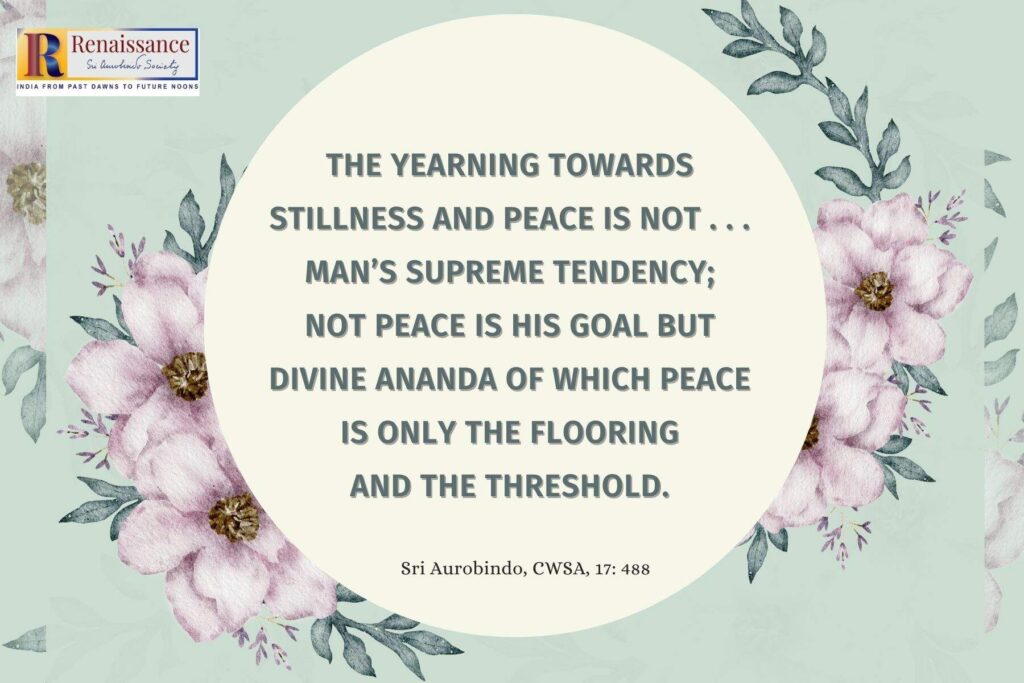
Peace and Sadhana
Another feature reminds us that peace is the essential and true remedy for all difficulties on the path. The key is to detach from and not identify with the wrong movements in the nature that are bound to come on the path of sadhana. Sri Aurobindo advises to go on aspiring for greater peace because only in inner peace and silence the Divine Force can work to transform the nature.
We also feature a few selections from Sri Aurobindo’s letters and the Mother’s conversations which speak of the complexity of the being and also on how to work upon the parts of the being which are less open to the Divine. These passages also highlight that an inner poise of peace and calm prepares a sadhak to meet the attacks of adverse forces on the path.
In the piece titled ‘Step Back, Keep Peace, Grow in Receptivity‘ we are reminded of the Mother’s highly practical advice on how to keep one’s peace. We also feature the Mother’s advice on how to invoke peace for a conscious sleep and establishing a settled peace in mind. For aspirants on the sunlit path, more practical guidance from the Mother and Sri Aurobindois found in the piece titled. ‘On Being Calm and Conquering Anger.’
Tales and Stories, Divine Humour and More
Sri Aurobindo once said that if one is looking for peace, one should go to Ramana Maharishi! What does that mean? Read about it in the Divine Humour section which highlights the specific conversation where this matter came up. The conversation also provides insightful perspectives which can help widen and deepen our understanding of peace in Integral Yoga. Peace, Persistence and Renunciation: Two Parables of Sri Ramakrishna brings for our readers two short tales which bring out two distinct but complementary aspects of peace.
The feature titled ‘Peace through Culture and Education‘ by Kireet Joshi emphasises that culture for peace implies a new orientation of human consciousness; it implies eventually transformation of human consciousness. In another piece titled ‘Indians in Adversity — The Hidden Strength Within‘, Chamanlal Gupta, a senior member of Sri Aurobindo Ashram recounts the time when he was trapped for thirty hours under a leaking hangar at Mumbai airport in July 2005.
In the ‘Book of the Month’ feature we highlight a Meditation on Peace, the Real Truth of Our Being from Anilbaran Roy’s beautiful collection ‘Songs from the Soul‘. For our flower-meditation series, this month we have a new author joining our Renaissance team — Chitra Kolluru, who reflects on ‘Indian Mulberry and Indispensable Peace‘.
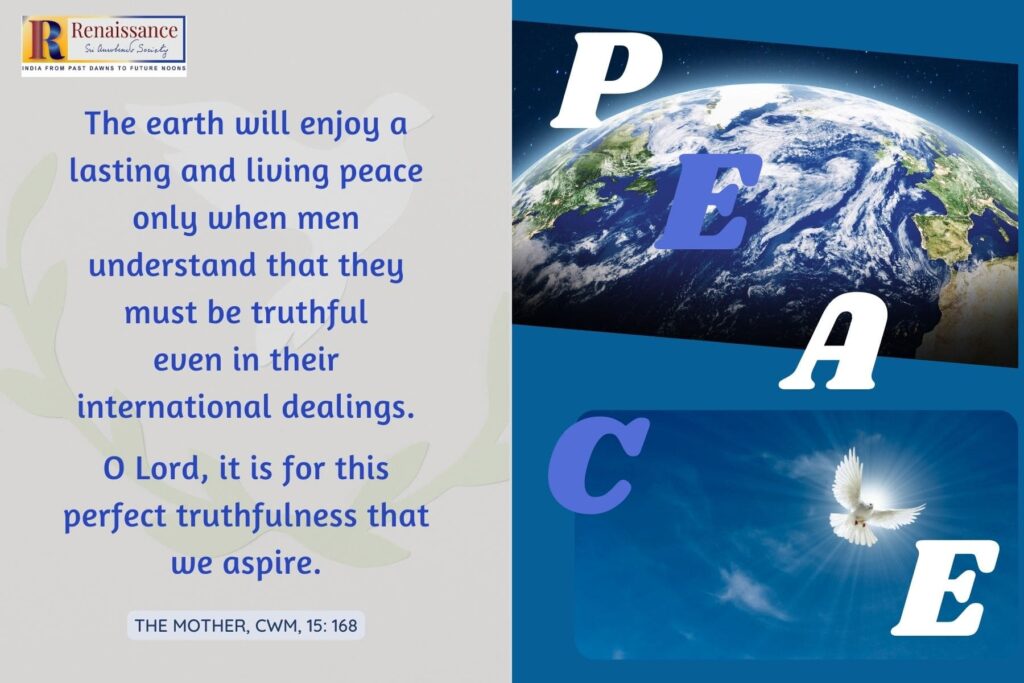
War and Peace
Mankind’s Illusions about “The Passing of War” features excerpts from Sri Aurobindo’s insightful essay titled ‘The Passing of War?’ which was written in the early months of World War I. The piece titled ‘Of Moral Violence and Gandhian Ahimsa‘ features a short piece by M. P. Pandit, titled ‘Violence‘. And apropos of this, we also include some remarks made by Sri Aurobindo regarding the methods of Satyagraha and Ahimsa applied by Gandhi during India’s freedom struggle.
The issue also features a letter from Sri Aurobindo where he speaks of WWII as the “Mother’s War.” A few excerpts from the book ‘On the Mother: The Chronicle of a Manifestation and Ministry’, which speak of the Mother’s and Sri Aurobindo’s yogic work in WW2 are also included in the feature titled “This is the Mother’s War”: Of WW2, Victory and Atomic Bomb.
Series on the Epics
With this issue we begin serialising selected essays of Prema Nandkumar focusing on Indian literature in the light of Sri Aurobindo. We begin with her essay on the two epics — Ramayana and Mahabharata. The first essay from the 1984 issue of Sri Aurobindo Circle provides an introduction and focuses on the Ramayana. We present part 1 of the essay under the title – ‘Sri Aurobindo’s Interpretation of Indian Culture: The Epics – 1′.
As always, we offer this work at the lotus feet of Sri Aurobindo and the Mother.
In gratitude,
Beloo Mehra (for Renaissance Editorial Team)

~ Design and flower photos: Beloo Mehra

